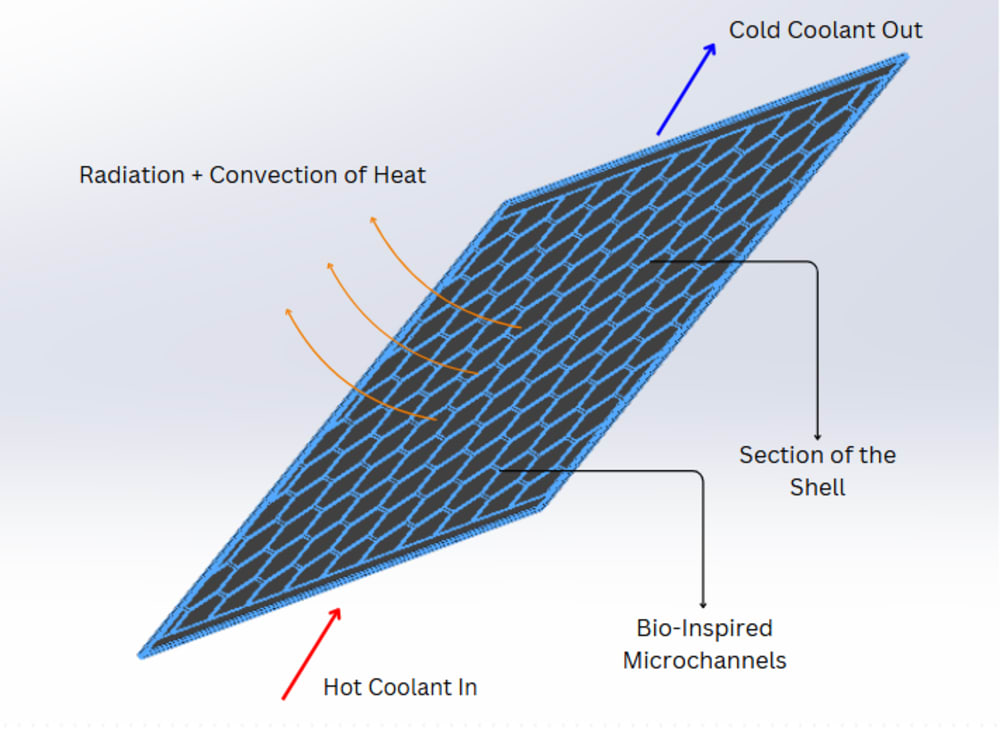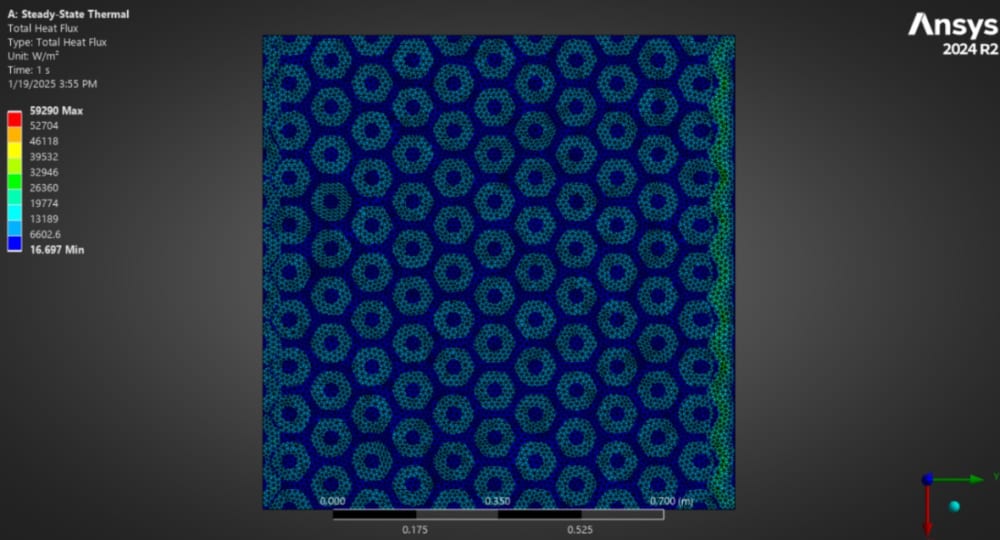This design introduces an innovative, bio-inspired thermal management system by embedding microchannels directly within the outer shell of the aerodynamic vehicle. The coolant flows through a honeycomb-patterned microchannel network, enabling the shell to serve as both the structural and thermal interface with the environment. This dual-purpose approach significantly reduces system weight, eliminates the need for bulky ancillary cooling units, and leverages the shell’s large surface area and exposure to the external infrastructure for passive heat dissipation.
A simplified 1 m² section of the shell was simulated using Aluminium 6061-T6, chosen for its high thermal conductivity (155.3 W/m·°C), low density, and strength. The microchannel geometry (1.004 m × 1 m × 0.015 m) showed promising results in steady-state thermal analysis. With an inlet water temperature of 100 °C, the system stabilized at 48.29 °C, achieving a 10°C reduction in coolant temperature. Heat flux ranged from 254.94 to 559,190 W/m², validating the concept’s effectiveness despite simplified assumptions that excluded convective and radiative effects.
From a feasibility and manufacturability standpoint, the design is fully compatible with current CNC machining and additive manufacturing techniques. Aluminium 6061-T6 is widely used in automotive and aerospace sectors, ensuring availability and cost-effectiveness. The modular design of the vehicle shell also simplifies integration with the overall structure without compromising aerodynamic or mechanical performance.
In terms of marketability, this thermal solution is broadly applicable across high-speed, enclosed-vehicle platforms—such as maglev trains, electric aircraft, and aerospace vehicles operating in low-pressure or thermally constrained environments. Its lightweight, space-saving architecture directly benefits transportation systems seeking efficient onboard cooling without sacrificing performance or safety. The design's structural integration offers a distinct advantage over traditional heat exchangers in markets where mass, volume, and system complexity are at a premium.
Future optimization will focus on advanced channel geometries (e.g., fractals or variable cross-sections), high-emissivity surface treatments, and refined multiphysics simulations that include airflow, convection, and radiation under realistic vehicle velocities. These enhancements will further improve thermal efficiency while maintaining manufacturability.
In conclusion, this shell-integrated microchannel heat exchanger demonstrates a highly innovative, compact, and scalable thermal management strategy. It aligns with the performance, cost, and safety requirements of next-generation transportation systems and holds strong commercial potential in advanced mobility sectors.
Like this entry?
-
About the Entrant
- Name:Aahir Basu
- Type of entry:teamTeam members:
- Aahir Basu
- Adarsh Lakshman
- Vatsal Kalola
- Lokesh Rastogi
- Anshuman Lenka
- Ashish Kumar
- Divyanshu Shanker
- Piyush Raj
- Juhi Umrao
- Palash Ghosh
- Software used for this entry:Ansys
- Patent status:none





